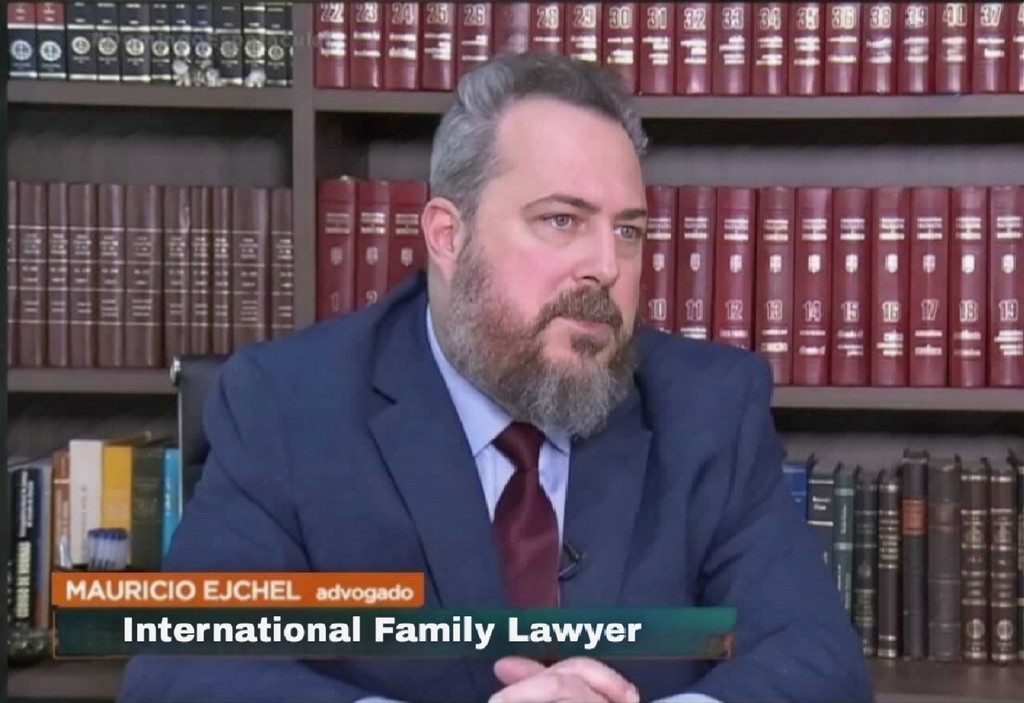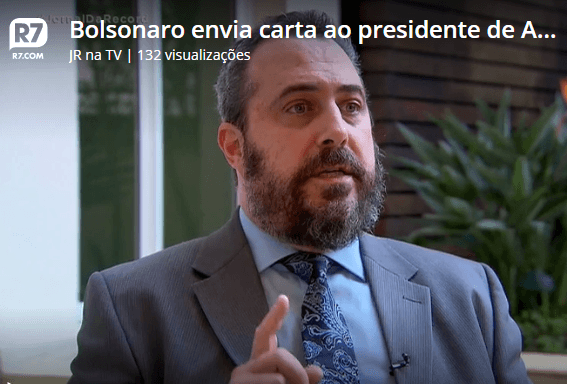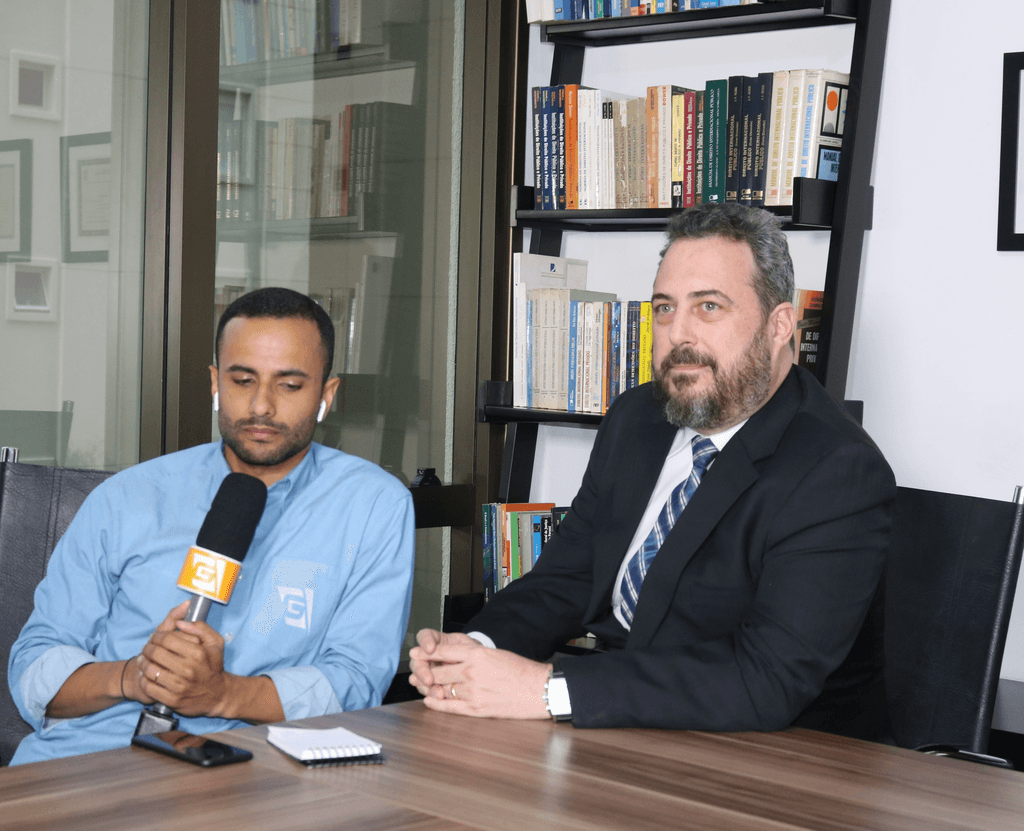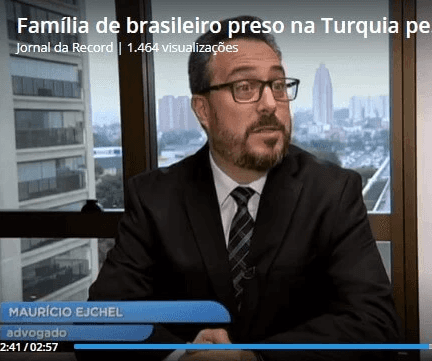The Act of Fraudulent Commission of Reality on Child Abduction Cases
The Act of Fraudulent Commission of Reality on Child Abduction Cases
Updates
Updates
×
25 de setembro de 2021
25 de setembro de 2021




The Act of Fraudulent Commission of Reality is defined as a strategy of deception of the reality of familial dynamics, fraudulently fabricated by the taking parent, accusing the left-behind parent of serious offenses against the children.
The Act intends to impose upon the left-behind parent false and baseless allegations to invoke the non-return exception for the child as stipulated under Article 13(1)(b) of the 1980 Hague Convention. This strategy aims to undermine the legal rights, reputation, and efforts of the left-behind parent, thereby delaying the swift return of the abducted children.
International child abduction involves a series of calculated steps, including escape planning, ticket purchases, and financial preparations for both abductor and child. It also requires securing the child’s travel documents, organizing essential and personal belongings, and arranging temporary accommodation at the destination, typically facilitated through the support of family and acquaintances.
Orchestrating such a plan, which often spans months from initial conception to final execution, meticulously sets the stage for the Act of Fraudulent Commission of Reality to take shape within this crafted framework.
Despite the diversity of tactics, an uniform initial indicator frequently emerges: the abductor maliciously alters their demeanor, displaying irrational characteristics such as severe unpredictability, aggressive outbursts, and erratic actions.
This change in behavior damages the parent-child relationship, confusing the left-behind parent. They swing between asking for medical and mental health help and feeling enraged, sometimes even asking the abductor’s family for support. These deliberate actions aim to exaggerate the public’s perception of the family’s instability, preparing the ground so that any subsequent serious complaints seem predictable, fitting into the already established narrative of discord.
In many instances, this conduct progresses to more serious acts, frequently prompting repeated provocations that foster belligerent interactions and occasionally culminating in physical violence. It is noteworthy that the initiation of hostilities does not typically originate from the left-behind parent; however, their reactive response, once manifested, is promptly construed as an imminent domestic violence complaint.
If the initial strategy fails, resort to simulating violent acts, often self-inflicted or fabricated, with claims of sexual violence being commonly deployed. These deceptive tactics may also include claims of psychological and emotional torture, complaints of abusive financial control, unlawful imprisonment, attempted homicide and even child molestation.
Then, the process typically unfolds with the abductor lodging a formal complaint (assault or similar) with law enforcement, precipitating the arrest or eviction of the left-behind parent from their living home. Subsequently, the acquisition of restraining orders eliminates any possibility of contact between the left-behind parent, the abductor, and the child, exacerbating the left-behind parent’s isolation and compounding the complexity of their situation.
The situation escalates with the mobilization of support from various groups, including NGOs, religious organizations, and legal advisors, reinforcing the narrative against the left-behind parent. Public exposure of the left-behind parent´s profile aims to solidify their perceived guilt not just within their immediate community but also on social media and potentially in their professional sphere, amplifying the campaign to discredit them thoroughly.
These accusations serve to disguise the abduction and can result in grave repercussions for the left-behind parent, potentially including lengthy imprisionment. Often, this fear of legal ramifications causes the left-behind parent to refrain from seeking the child´s return, wary of facing negative outcomes.
Only afterward, armed with documents resulting from the aforementioned actions, including copies of messages, files, orders, and other pertinent documents, did the taking parent depart the country with the child.
The Act of Fraudulent Commission of Reality, while not a term formally recognized in international law, can be analyzed through the lens of existing principles and legal frameworks that govern international child abduction, fraud, and the manipulation of legal systems. The Act can be dissected from multiple legal perspectives, each anchored in the principles of international law:
1. Violation of the Hague Convention on the Civil Aspects of International Child Abduction (1980): The Act can be seen as a direct violation of the principles established by the Convention, specifically designed to protect children from wrongful removal or retention across international borders. The fraudulent creation of reality to justify the abduction contravenes the Convention’s objective to ensure the prompt return of abducted children to their country of habitual residence.
2. Fraud and Deceit: At its core, the Act involves elements of fraud and deceit, manipulating factual circumstances and legal documentation to achieve an unlawful outcome. This manipulation can be analyzed under the broader umbrella of fraud in international legal instruments, such as the United Nations Convention against Corruption, which addresses various forms of deceit, including obstruction of justice and manipulation of evidence.
3. Obstruction of Justice: The strategic manipulation of legal narratives to prevent the return of an abducted child could be interpreted as an obstruction of justice. This is relevant under international human rights law, where the right to a fair trial and access to justice are paramount. By creating false narratives, the act impedes the legal process and denies the left-behind parent their right to legal recourse.
4. Violation of Child Rights: Under the United Nations Convention on the Rights of the Child (CRC), children have the right to maintain personal relations and direct contact with both parents unless contrary to their best interests. The Act of Fraudulent Commission of Reality infringes upon this right by manipulating circumstances to sever the relationship between the child and the left-behind parent, potentially violating the child’s right to family life.
5. Psychological Manipulation and Abuse: The Act could also be analyzed under the scope of psychological manipulation and abuse, impacting both the child and the left-behind parent. This aspect is increasingly recognized in international legal discussions about coercive control and psychological violence, which can constitute forms of abuse with significant legal implications.
6. Cross-Border Legal Implications: Given the international nature of child abduction, the act raises complex legal issues across jurisdictions. This includes the recognition and enforcement of foreign judgments, the application of legal standards across borders, and the challenges of legal cooperation and mutual legal assistance in criminal matters involving deceit and manipulation.
Combating the vile Act of Fraudulent Commission of Reality is quite challenging, as the abductor often uses events that occurred in the child’s country of origin to provide evidence and sabotage their return to the destination country, taking advantage of the distance and the lack of efficient means to verify the truthfulness of the information presented by the authority responsible for judging the legality of the child’s return request.
The Act of Fraudulent Commission of Reality necessitates interpretation and regulation as a procedure of criminal intent, executed with deliberation and recurrence, thereby establishing it as a conventional mechanism systematically exploited by abductors.
Thank you,
Dr. Mauricio Ejchel
The Act of Fraudulent Commission of Reality is defined as a strategy of deception of the reality of familial dynamics, fraudulently fabricated by the taking parent, accusing the left-behind parent of serious offenses against the children.
The Act intends to impose upon the left-behind parent false and baseless allegations to invoke the non-return exception for the child as stipulated under Article 13(1)(b) of the 1980 Hague Convention. This strategy aims to undermine the legal rights, reputation, and efforts of the left-behind parent, thereby delaying the swift return of the abducted children.
International child abduction involves a series of calculated steps, including escape planning, ticket purchases, and financial preparations for both abductor and child. It also requires securing the child’s travel documents, organizing essential and personal belongings, and arranging temporary accommodation at the destination, typically facilitated through the support of family and acquaintances.
Orchestrating such a plan, which often spans months from initial conception to final execution, meticulously sets the stage for the Act of Fraudulent Commission of Reality to take shape within this crafted framework.
Despite the diversity of tactics, an uniform initial indicator frequently emerges: the abductor maliciously alters their demeanor, displaying irrational characteristics such as severe unpredictability, aggressive outbursts, and erratic actions.
This change in behavior damages the parent-child relationship, confusing the left-behind parent. They swing between asking for medical and mental health help and feeling enraged, sometimes even asking the abductor’s family for support. These deliberate actions aim to exaggerate the public’s perception of the family’s instability, preparing the ground so that any subsequent serious complaints seem predictable, fitting into the already established narrative of discord.
In many instances, this conduct progresses to more serious acts, frequently prompting repeated provocations that foster belligerent interactions and occasionally culminating in physical violence. It is noteworthy that the initiation of hostilities does not typically originate from the left-behind parent; however, their reactive response, once manifested, is promptly construed as an imminent domestic violence complaint.
If the initial strategy fails, resort to simulating violent acts, often self-inflicted or fabricated, with claims of sexual violence being commonly deployed. These deceptive tactics may also include claims of psychological and emotional torture, complaints of abusive financial control, unlawful imprisonment, attempted homicide and even child molestation.
Then, the process typically unfolds with the abductor lodging a formal complaint (assault or similar) with law enforcement, precipitating the arrest or eviction of the left-behind parent from their living home. Subsequently, the acquisition of restraining orders eliminates any possibility of contact between the left-behind parent, the abductor, and the child, exacerbating the left-behind parent’s isolation and compounding the complexity of their situation.
The situation escalates with the mobilization of support from various groups, including NGOs, religious organizations, and legal advisors, reinforcing the narrative against the left-behind parent. Public exposure of the left-behind parent´s profile aims to solidify their perceived guilt not just within their immediate community but also on social media and potentially in their professional sphere, amplifying the campaign to discredit them thoroughly.
These accusations serve to disguise the abduction and can result in grave repercussions for the left-behind parent, potentially including lengthy imprisionment. Often, this fear of legal ramifications causes the left-behind parent to refrain from seeking the child´s return, wary of facing negative outcomes.
Only afterward, armed with documents resulting from the aforementioned actions, including copies of messages, files, orders, and other pertinent documents, did the taking parent depart the country with the child.
The Act of Fraudulent Commission of Reality, while not a term formally recognized in international law, can be analyzed through the lens of existing principles and legal frameworks that govern international child abduction, fraud, and the manipulation of legal systems. The Act can be dissected from multiple legal perspectives, each anchored in the principles of international law:
1. Violation of the Hague Convention on the Civil Aspects of International Child Abduction (1980): The Act can be seen as a direct violation of the principles established by the Convention, specifically designed to protect children from wrongful removal or retention across international borders. The fraudulent creation of reality to justify the abduction contravenes the Convention’s objective to ensure the prompt return of abducted children to their country of habitual residence.
2. Fraud and Deceit: At its core, the Act involves elements of fraud and deceit, manipulating factual circumstances and legal documentation to achieve an unlawful outcome. This manipulation can be analyzed under the broader umbrella of fraud in international legal instruments, such as the United Nations Convention against Corruption, which addresses various forms of deceit, including obstruction of justice and manipulation of evidence.
3. Obstruction of Justice: The strategic manipulation of legal narratives to prevent the return of an abducted child could be interpreted as an obstruction of justice. This is relevant under international human rights law, where the right to a fair trial and access to justice are paramount. By creating false narratives, the act impedes the legal process and denies the left-behind parent their right to legal recourse.
4. Violation of Child Rights: Under the United Nations Convention on the Rights of the Child (CRC), children have the right to maintain personal relations and direct contact with both parents unless contrary to their best interests. The Act of Fraudulent Commission of Reality infringes upon this right by manipulating circumstances to sever the relationship between the child and the left-behind parent, potentially violating the child’s right to family life.
5. Psychological Manipulation and Abuse: The Act could also be analyzed under the scope of psychological manipulation and abuse, impacting both the child and the left-behind parent. This aspect is increasingly recognized in international legal discussions about coercive control and psychological violence, which can constitute forms of abuse with significant legal implications.
6. Cross-Border Legal Implications: Given the international nature of child abduction, the act raises complex legal issues across jurisdictions. This includes the recognition and enforcement of foreign judgments, the application of legal standards across borders, and the challenges of legal cooperation and mutual legal assistance in criminal matters involving deceit and manipulation.
Combating the vile Act of Fraudulent Commission of Reality is quite challenging, as the abductor often uses events that occurred in the child’s country of origin to provide evidence and sabotage their return to the destination country, taking advantage of the distance and the lack of efficient means to verify the truthfulness of the information presented by the authority responsible for judging the legality of the child’s return request.
The Act of Fraudulent Commission of Reality necessitates interpretation and regulation as a procedure of criminal intent, executed with deliberation and recurrence, thereby establishing it as a conventional mechanism systematically exploited by abductors.
Thank you,
Dr. Mauricio Ejchel
The Act of Fraudulent Commission of Reality is defined as a strategy of deception of the reality of familial dynamics, fraudulently fabricated by the taking parent, accusing the left-behind parent of serious offenses against the children.
The Act intends to impose upon the left-behind parent false and baseless allegations to invoke the non-return exception for the child as stipulated under Article 13(1)(b) of the 1980 Hague Convention. This strategy aims to undermine the legal rights, reputation, and efforts of the left-behind parent, thereby delaying the swift return of the abducted children.
International child abduction involves a series of calculated steps, including escape planning, ticket purchases, and financial preparations for both abductor and child. It also requires securing the child’s travel documents, organizing essential and personal belongings, and arranging temporary accommodation at the destination, typically facilitated through the support of family and acquaintances.
Orchestrating such a plan, which often spans months from initial conception to final execution, meticulously sets the stage for the Act of Fraudulent Commission of Reality to take shape within this crafted framework.
Despite the diversity of tactics, an uniform initial indicator frequently emerges: the abductor maliciously alters their demeanor, displaying irrational characteristics such as severe unpredictability, aggressive outbursts, and erratic actions.
This change in behavior damages the parent-child relationship, confusing the left-behind parent. They swing between asking for medical and mental health help and feeling enraged, sometimes even asking the abductor’s family for support. These deliberate actions aim to exaggerate the public’s perception of the family’s instability, preparing the ground so that any subsequent serious complaints seem predictable, fitting into the already established narrative of discord.
In many instances, this conduct progresses to more serious acts, frequently prompting repeated provocations that foster belligerent interactions and occasionally culminating in physical violence. It is noteworthy that the initiation of hostilities does not typically originate from the left-behind parent; however, their reactive response, once manifested, is promptly construed as an imminent domestic violence complaint.
If the initial strategy fails, resort to simulating violent acts, often self-inflicted or fabricated, with claims of sexual violence being commonly deployed. These deceptive tactics may also include claims of psychological and emotional torture, complaints of abusive financial control, unlawful imprisonment, attempted homicide and even child molestation.
Then, the process typically unfolds with the abductor lodging a formal complaint (assault or similar) with law enforcement, precipitating the arrest or eviction of the left-behind parent from their living home. Subsequently, the acquisition of restraining orders eliminates any possibility of contact between the left-behind parent, the abductor, and the child, exacerbating the left-behind parent’s isolation and compounding the complexity of their situation.
The situation escalates with the mobilization of support from various groups, including NGOs, religious organizations, and legal advisors, reinforcing the narrative against the left-behind parent. Public exposure of the left-behind parent´s profile aims to solidify their perceived guilt not just within their immediate community but also on social media and potentially in their professional sphere, amplifying the campaign to discredit them thoroughly.
These accusations serve to disguise the abduction and can result in grave repercussions for the left-behind parent, potentially including lengthy imprisionment. Often, this fear of legal ramifications causes the left-behind parent to refrain from seeking the child´s return, wary of facing negative outcomes.
Only afterward, armed with documents resulting from the aforementioned actions, including copies of messages, files, orders, and other pertinent documents, did the taking parent depart the country with the child.
The Act of Fraudulent Commission of Reality, while not a term formally recognized in international law, can be analyzed through the lens of existing principles and legal frameworks that govern international child abduction, fraud, and the manipulation of legal systems. The Act can be dissected from multiple legal perspectives, each anchored in the principles of international law:
1. Violation of the Hague Convention on the Civil Aspects of International Child Abduction (1980): The Act can be seen as a direct violation of the principles established by the Convention, specifically designed to protect children from wrongful removal or retention across international borders. The fraudulent creation of reality to justify the abduction contravenes the Convention’s objective to ensure the prompt return of abducted children to their country of habitual residence.
2. Fraud and Deceit: At its core, the Act involves elements of fraud and deceit, manipulating factual circumstances and legal documentation to achieve an unlawful outcome. This manipulation can be analyzed under the broader umbrella of fraud in international legal instruments, such as the United Nations Convention against Corruption, which addresses various forms of deceit, including obstruction of justice and manipulation of evidence.
3. Obstruction of Justice: The strategic manipulation of legal narratives to prevent the return of an abducted child could be interpreted as an obstruction of justice. This is relevant under international human rights law, where the right to a fair trial and access to justice are paramount. By creating false narratives, the act impedes the legal process and denies the left-behind parent their right to legal recourse.
4. Violation of Child Rights: Under the United Nations Convention on the Rights of the Child (CRC), children have the right to maintain personal relations and direct contact with both parents unless contrary to their best interests. The Act of Fraudulent Commission of Reality infringes upon this right by manipulating circumstances to sever the relationship between the child and the left-behind parent, potentially violating the child’s right to family life.
5. Psychological Manipulation and Abuse: The Act could also be analyzed under the scope of psychological manipulation and abuse, impacting both the child and the left-behind parent. This aspect is increasingly recognized in international legal discussions about coercive control and psychological violence, which can constitute forms of abuse with significant legal implications.
6. Cross-Border Legal Implications: Given the international nature of child abduction, the act raises complex legal issues across jurisdictions. This includes the recognition and enforcement of foreign judgments, the application of legal standards across borders, and the challenges of legal cooperation and mutual legal assistance in criminal matters involving deceit and manipulation.
Combating the vile Act of Fraudulent Commission of Reality is quite challenging, as the abductor often uses events that occurred in the child’s country of origin to provide evidence and sabotage their return to the destination country, taking advantage of the distance and the lack of efficient means to verify the truthfulness of the information presented by the authority responsible for judging the legality of the child’s return request.
The Act of Fraudulent Commission of Reality necessitates interpretation and regulation as a procedure of criminal intent, executed with deliberation and recurrence, thereby establishing it as a conventional mechanism systematically exploited by abductors.
Thank you,
Dr. Mauricio Ejchel
The Act of Fraudulent Commission of Reality is defined as a strategy of deception of the reality of familial dynamics, fraudulently fabricated by the taking parent, accusing the left-behind parent of serious offenses against the children.
The Act intends to impose upon the left-behind parent false and baseless allegations to invoke the non-return exception for the child as stipulated under Article 13(1)(b) of the 1980 Hague Convention. This strategy aims to undermine the legal rights, reputation, and efforts of the left-behind parent, thereby delaying the swift return of the abducted children.
International child abduction involves a series of calculated steps, including escape planning, ticket purchases, and financial preparations for both abductor and child. It also requires securing the child’s travel documents, organizing essential and personal belongings, and arranging temporary accommodation at the destination, typically facilitated through the support of family and acquaintances.
Orchestrating such a plan, which often spans months from initial conception to final execution, meticulously sets the stage for the Act of Fraudulent Commission of Reality to take shape within this crafted framework.
Despite the diversity of tactics, an uniform initial indicator frequently emerges: the abductor maliciously alters their demeanor, displaying irrational characteristics such as severe unpredictability, aggressive outbursts, and erratic actions.
This change in behavior damages the parent-child relationship, confusing the left-behind parent. They swing between asking for medical and mental health help and feeling enraged, sometimes even asking the abductor’s family for support. These deliberate actions aim to exaggerate the public’s perception of the family’s instability, preparing the ground so that any subsequent serious complaints seem predictable, fitting into the already established narrative of discord.
In many instances, this conduct progresses to more serious acts, frequently prompting repeated provocations that foster belligerent interactions and occasionally culminating in physical violence. It is noteworthy that the initiation of hostilities does not typically originate from the left-behind parent; however, their reactive response, once manifested, is promptly construed as an imminent domestic violence complaint.
If the initial strategy fails, resort to simulating violent acts, often self-inflicted or fabricated, with claims of sexual violence being commonly deployed. These deceptive tactics may also include claims of psychological and emotional torture, complaints of abusive financial control, unlawful imprisonment, attempted homicide and even child molestation.
Then, the process typically unfolds with the abductor lodging a formal complaint (assault or similar) with law enforcement, precipitating the arrest or eviction of the left-behind parent from their living home. Subsequently, the acquisition of restraining orders eliminates any possibility of contact between the left-behind parent, the abductor, and the child, exacerbating the left-behind parent’s isolation and compounding the complexity of their situation.
The situation escalates with the mobilization of support from various groups, including NGOs, religious organizations, and legal advisors, reinforcing the narrative against the left-behind parent. Public exposure of the left-behind parent´s profile aims to solidify their perceived guilt not just within their immediate community but also on social media and potentially in their professional sphere, amplifying the campaign to discredit them thoroughly.
These accusations serve to disguise the abduction and can result in grave repercussions for the left-behind parent, potentially including lengthy imprisionment. Often, this fear of legal ramifications causes the left-behind parent to refrain from seeking the child´s return, wary of facing negative outcomes.
Only afterward, armed with documents resulting from the aforementioned actions, including copies of messages, files, orders, and other pertinent documents, did the taking parent depart the country with the child.
The Act of Fraudulent Commission of Reality, while not a term formally recognized in international law, can be analyzed through the lens of existing principles and legal frameworks that govern international child abduction, fraud, and the manipulation of legal systems. The Act can be dissected from multiple legal perspectives, each anchored in the principles of international law:
1. Violation of the Hague Convention on the Civil Aspects of International Child Abduction (1980): The Act can be seen as a direct violation of the principles established by the Convention, specifically designed to protect children from wrongful removal or retention across international borders. The fraudulent creation of reality to justify the abduction contravenes the Convention’s objective to ensure the prompt return of abducted children to their country of habitual residence.
2. Fraud and Deceit: At its core, the Act involves elements of fraud and deceit, manipulating factual circumstances and legal documentation to achieve an unlawful outcome. This manipulation can be analyzed under the broader umbrella of fraud in international legal instruments, such as the United Nations Convention against Corruption, which addresses various forms of deceit, including obstruction of justice and manipulation of evidence.
3. Obstruction of Justice: The strategic manipulation of legal narratives to prevent the return of an abducted child could be interpreted as an obstruction of justice. This is relevant under international human rights law, where the right to a fair trial and access to justice are paramount. By creating false narratives, the act impedes the legal process and denies the left-behind parent their right to legal recourse.
4. Violation of Child Rights: Under the United Nations Convention on the Rights of the Child (CRC), children have the right to maintain personal relations and direct contact with both parents unless contrary to their best interests. The Act of Fraudulent Commission of Reality infringes upon this right by manipulating circumstances to sever the relationship between the child and the left-behind parent, potentially violating the child’s right to family life.
5. Psychological Manipulation and Abuse: The Act could also be analyzed under the scope of psychological manipulation and abuse, impacting both the child and the left-behind parent. This aspect is increasingly recognized in international legal discussions about coercive control and psychological violence, which can constitute forms of abuse with significant legal implications.
6. Cross-Border Legal Implications: Given the international nature of child abduction, the act raises complex legal issues across jurisdictions. This includes the recognition and enforcement of foreign judgments, the application of legal standards across borders, and the challenges of legal cooperation and mutual legal assistance in criminal matters involving deceit and manipulation.
Combating the vile Act of Fraudulent Commission of Reality is quite challenging, as the abductor often uses events that occurred in the child’s country of origin to provide evidence and sabotage their return to the destination country, taking advantage of the distance and the lack of efficient means to verify the truthfulness of the information presented by the authority responsible for judging the legality of the child’s return request.
The Act of Fraudulent Commission of Reality necessitates interpretation and regulation as a procedure of criminal intent, executed with deliberation and recurrence, thereby establishing it as a conventional mechanism systematically exploited by abductors.
Thank you,
Dr. Mauricio Ejchel
Veja também

Father´s Rights in International Law
Updates
×
1 de nov. de 2024

Father´s Rights in International Law
Updates
×
1 de nov. de 2024

Father´s Rights in International Law
Updates
×
1 de nov. de 2024

How to Retain a Lawyer in Brazil
Updates
×
8 de abr. de 2024

How to Retain a Lawyer in Brazil
Updates
×
8 de abr. de 2024

How to Retain a Lawyer in Brazil
Updates
×
8 de abr. de 2024

Hague Child Abduction in Brazil
Updates
×
25 de nov. de 2023

Hague Child Abduction in Brazil
Updates
×
25 de nov. de 2023

Hague Child Abduction in Brazil
Updates
×
25 de nov. de 2023

Brazilian Law Manual
Updates
×
25 de out. de 2023

Brazilian Law Manual
Updates
×
25 de out. de 2023

Brazilian Law Manual
Updates
×
25 de out. de 2023

Father´s Rights in International Law
Updates
×
1 de nov. de 2024

How to Retain a Lawyer in Brazil
Updates
×
8 de abr. de 2024

Hague Child Abduction in Brazil
Updates
×
25 de nov. de 2023
Visite o Blog
Visite o Blog
MF. Ejchel International Advocacy. 1996
MF. Ejchel International
Advocacy
1996
MF. Ejchel International Advocacy.
1996
MF. Ejchel International Advocacy. 1996








